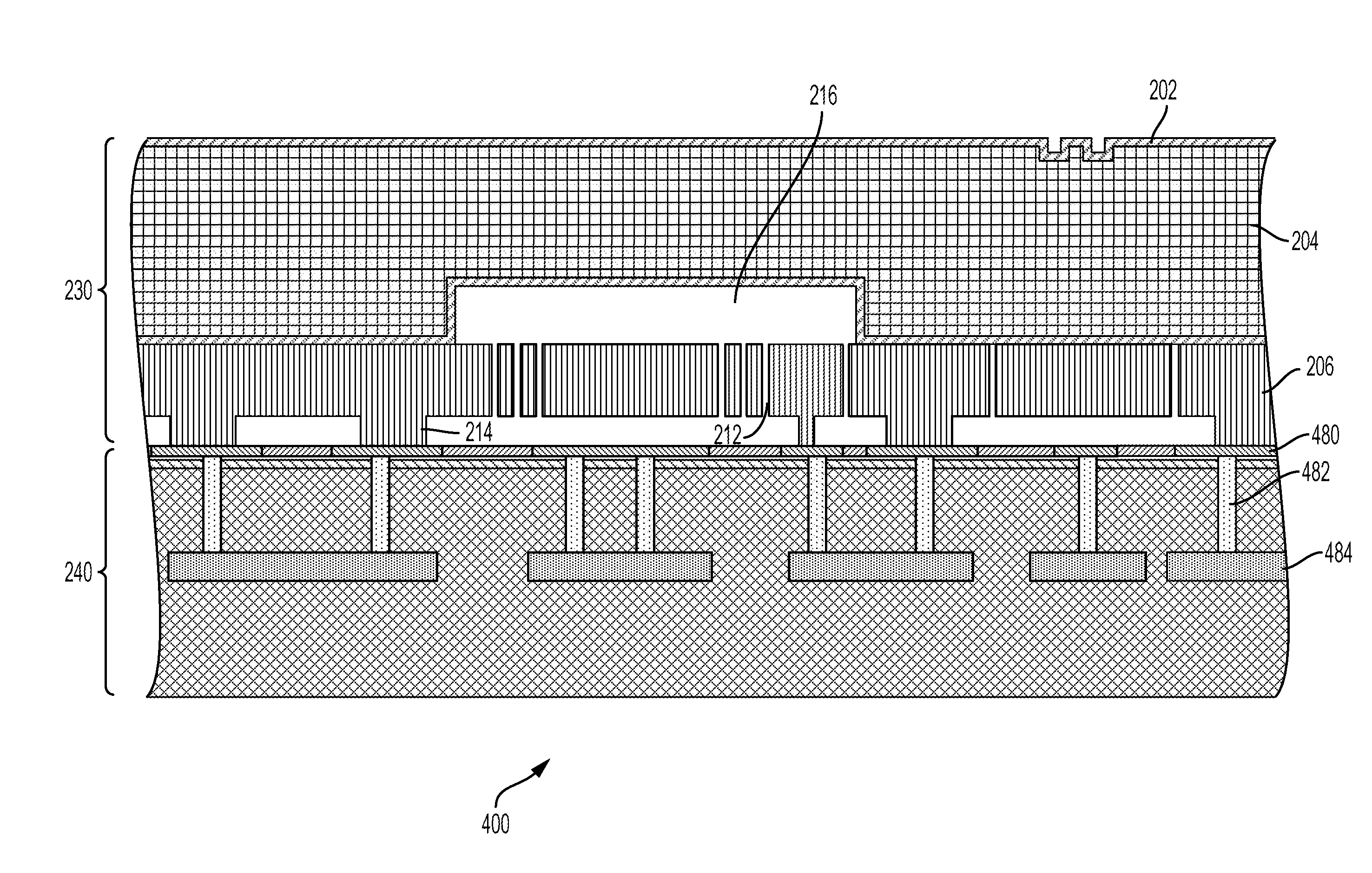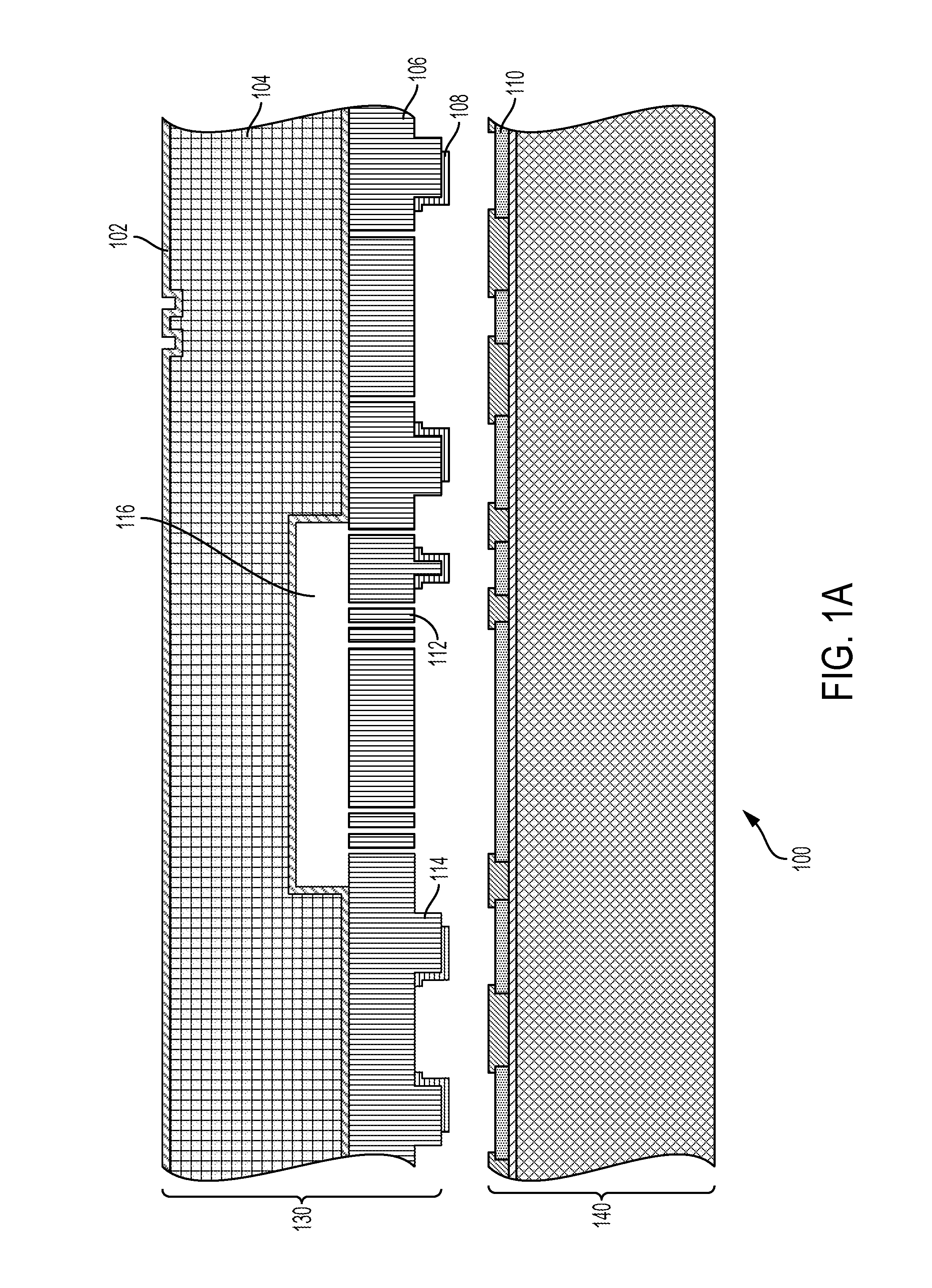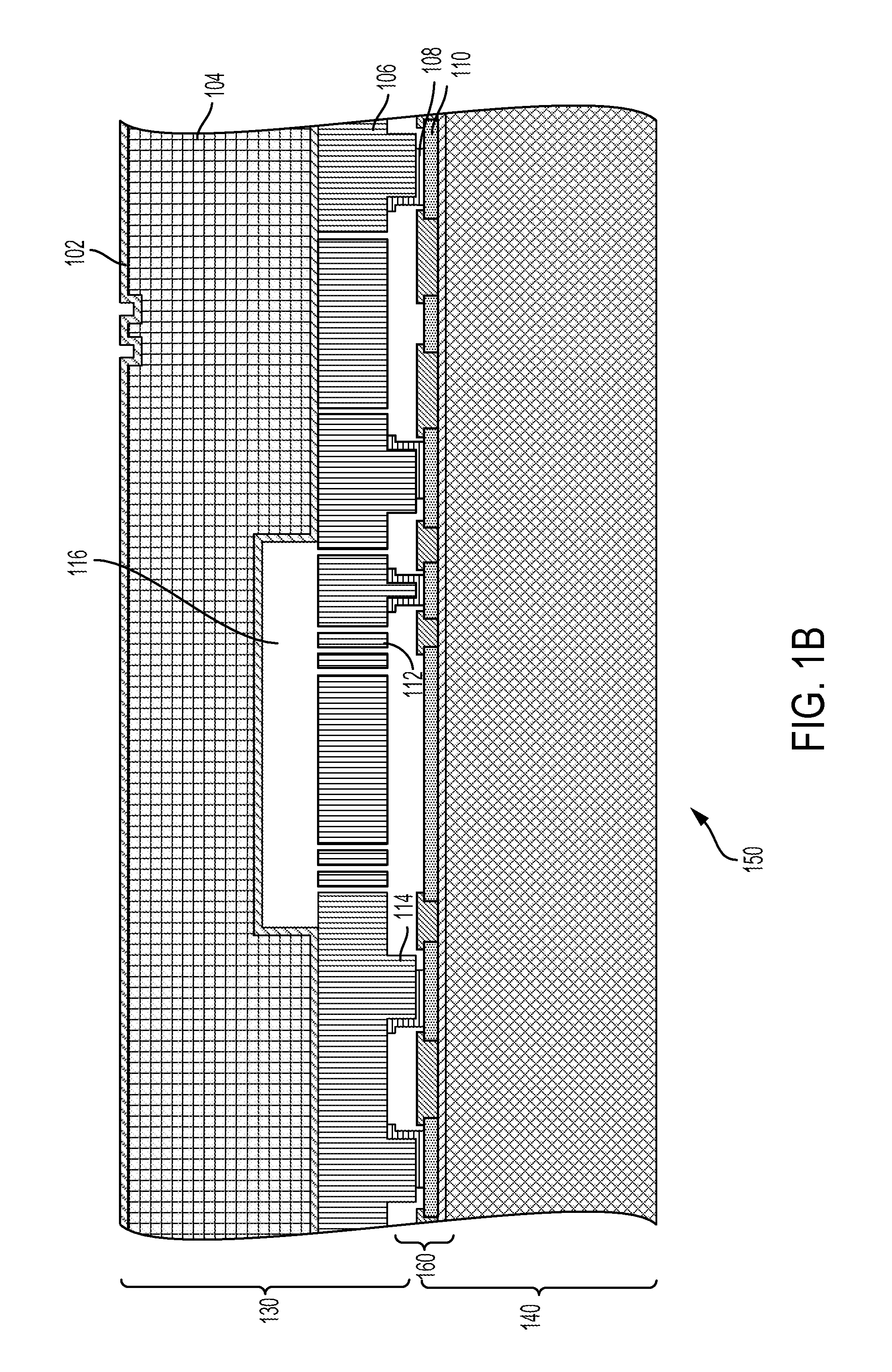Cmos-mems integration using metal silicide formation
a metal silicide and metal oxidesemiconductor technology, applied in the field of microelectromechanical systems (mems) devices, can solve the problems of parametric shift rendering of mems devices, or in the worst case non-functionality
- Summary
- Abstract
- Description
- Claims
- Application Information
AI Technical Summary
Benefits of technology
Problems solved by technology
Method used
Image
Examples
first embodiment
[0026]FIG. 2 illustrates a CMOS-MEMS integrated device 200 using a lower temperature bonding process in accordance with a The CMOS-MEMS integrated device 200 includes a MEMS substrate 230 and a CMOS substrate 240. The CMOS substrate 240 includes a plurality of open bond pads that comprise a top metal layer 210 exposed on a top surface of the CMOS substrate 240. In one embodiment, the top metal layer 210 comprises aluminum (Al). In another embodiment, the top metal layer 210 comprises any of an aluminum / copper alloy, tungsten, titanium, titanium nitride, and aluminum.
[0027]In addition, and unlike the CMOS-MEMS integrated devices 100 and 150, the CMOS-MEMS integrated device 200 includes a conductive metal layer 218 that is deposited on top of the top metal layer 210. The combination of the top metal layer 210 and the conductive metal layer 218 is patterned to form a new top metal layer. In one embodiment, the conductive metal layer 218 that is deposited is between 10 and 500 nanomete...
second embodiment
[0030]FIG. 3 illustrates a CMOS-MEMS integrated device 300 using a lower temperature bonding process in accordance with a The CMOS-MEMS integrated device 300 includes the same components 202-216, 230, and 240 as the CMOS-MEMS integrated device 200 of FIG. 2. However, in FIG. 3, the conductive metal layer 318 is present over the areas in which bonding with the at least one MEMS bond anchor (standoff) 314 occurs using a masking process. Therefore, there is no conductive metal layer 318 over the area 370. Specifically, the conductive metal layer 318 is selectively patterned only on eutectic bond pads formed on the top metal layer 310 thereby leaving electrodes, shields, and wire bond pads (that make up the area 370) open which exposes the top metal layer 310.
third embodiment
[0031]FIG. 4 illustrates a CMOS-MEMS integrated device 400 using a lower temperature bonding process in accordance with a The CMOS-MEMS integrated device 400 includes the same components 202, 204, 206, 212, 214, and 216 of the MEMS substrate 230 of FIG. 2. However, in FIG. 4, the CMOS substrate includes a layer 480 instead of the new top metal layer of FIG. 2 that is formed as a combination between the top metal layer 210 and the conductive metal layer 218. The layer 480 is coupled to at least one via 482 that interconnects to a buried CMOS metal layer 484. In one embodiment, the layer 480 serves as at least one electrode and at least one bond pad using any of a copper (Cu) and a tungsten (W) metal.
[0032]As in FIG. 2, the lower temperature bonding process of FIG. 4 that utilizes a metal silicide formation enables the removal of the Al-squish process utilized by conventional bonding processes. Without Al-squish, the MEMS Si to M-top sensing electrode gap is just the standoff heights...
PUM
| Property | Measurement | Unit |
|---|---|---|
| down forces | aaaaa | aaaaa |
| temperatures | aaaaa | aaaaa |
| temperatures | aaaaa | aaaaa |
Abstract
Description
Claims
Application Information
 Login to View More
Login to View More - R&D
- Intellectual Property
- Life Sciences
- Materials
- Tech Scout
- Unparalleled Data Quality
- Higher Quality Content
- 60% Fewer Hallucinations
Browse by: Latest US Patents, China's latest patents, Technical Efficacy Thesaurus, Application Domain, Technology Topic, Popular Technical Reports.
© 2025 PatSnap. All rights reserved.Legal|Privacy policy|Modern Slavery Act Transparency Statement|Sitemap|About US| Contact US: help@patsnap.com



